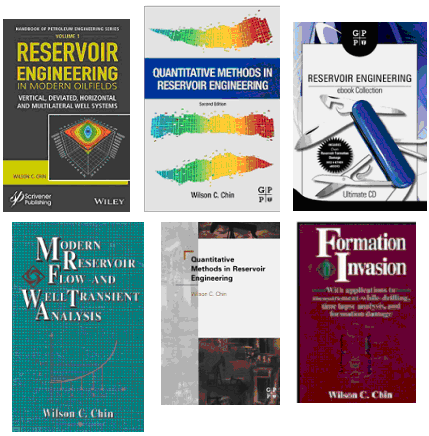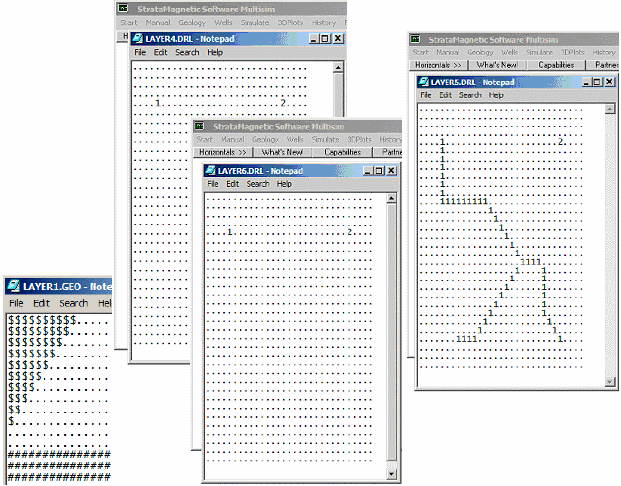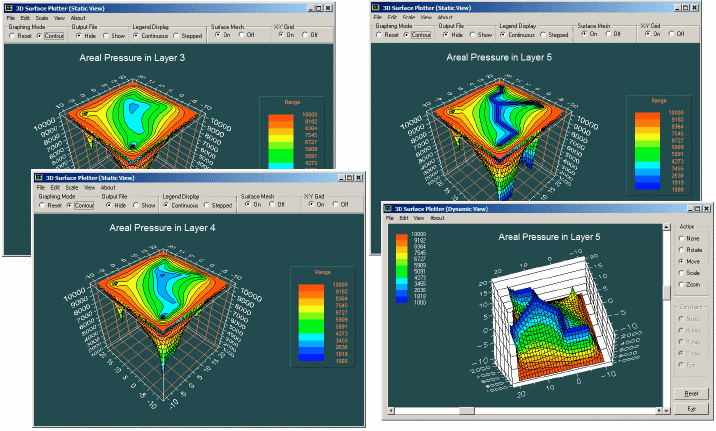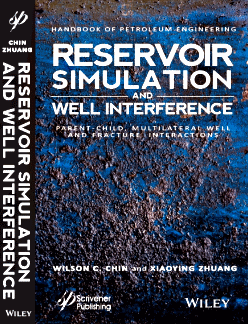RESERVOIR
ENGINEERING
BACKGROUND

As Senior Staff Reservoir Engineer, the author won the 1990 BP Chairman's Innovation Award for novel modeling approaches, software development and Lisburne field activities. These researches have since been widely published and it is not possible to summarize these here (please visit our Table of Contents pages). Suffice it to say that we've rigorously studied fractures, shales, streamline tracing, reservoir simulation, formation invasion, and numerous key fluid processes central to production planning, drilling and log interpretation.
For illustrative purposes, we'll discuss one timely subject - reservoir performance applicable to systems of vertical, deviated, horizontal and multilateral wells in layered, heterogeneous and anisotropic reservoirs in steady and transient production for both liquids and gases. All of our methods are rigorously derived, validated numerically and explained in careful detail - limitations behind existing methods are reviewed in our latest Quantitative Methods in Reservoir Engineering, Second Edition (2016) available in English and Chinese. For brevity, we will focus on "the big picture" below.
TECHNOLOGY

Uncompromising hurdles faced by reservoir engineers running Darcy flow simulators include long computing times, countless menus, specialized hardware and graphics processors, not to mention manuals, manuals and more manuals. In 2002, a consortium led by ExxonMobil, Shell and ChevronTexaco funded Houston's well known Education for the Energy Industry (EEI) program, designed to introduce inner city K-12 students to opportunities in the petroleum industry.
In a field marked by more than eighty competitors, Stratamagnetic Software, LLC won the bidding with a simple challenge and commitment - we'll put advanced simulation capabilities in the hands of high school students that will allow them to effortlessly perform state-of-the-art professional analyses (photos of student and teacher training activities and results appear in our latest book).
SIMULATOR DETAILSOur simulator was designed to run on average Windows computers without special accelerators or graphics processors. User interfaces were simple. For instance, geological layers are constructed using Notepad editors, with keyboard symbols like "$,#,& and ." representing lithologies whose properties (like anisotropic permeability, porosity, rock and fluid compressibility) were interrogated and inputted later. Wells are represented by numbers like "1,2,3 ... 9" - Multilateral system "1," shown in the above diagram, illustrates a difficult example which would required hours of work on conventional simulators. "2" represents a neighboring (partially penetrating) vertical well.
Next, on-screen input boxes appear that are tailored to users' objectives. For instance, screens for porosity and compressibility would not appear for steady flow analysis; otherwise, the needed menus appear with online help offering physical descriptions and suggested values. A simple "click" launches the simulator, and in most cases, complete full-field solutions (plus individual well pressure and rate history curves) are obtained and automatically displayed in three-dimensional color.
We emphasize that, during our simulations, well constraints can be changed, transmissibilities modified, old laterals or wells shut down, and new ones drilled - operations that reflect actual operations in real oil fields. MultiSimTM menus were designed to encapsulate workflows optimized at leading oil companies. In short, we've combined the best algorithms with the most intuitive user interfaces. And best of all, the system is so "friendly" that user manuals are not necessary.

Our latest reservoir simulation book, published Q2 2020 . . .
Reservoir Simulation and Well Interference: Parent-Child, Multilateral Well and Fracture Interactions, by Wilson Chin and Xiaoying Zhuang, John Wiley & Sons, 2020 (see home page for description).

Write today, for your Multisim software demo! Thanks.
About Us
Home | Team Members | Papers | Patents | Books | Brochures | Contact |
Research, Science and Engineering
Home | Measurement While Drilling | Formation Testing | Fluid Rheology | Managed Pressure Drilling | Reservoir Engineering | Electromagnetic Modeling | Waves and Vibrations | Aerodynamics | Biomedical Imaging |
Copyright (C) 2025, by Stratamagnetic Software, LLC. All rights reserved.